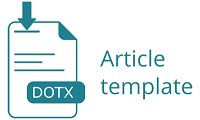Faktor Penghambat Bidan Pada Pendidikan Jenjang Profesi Di Jurusan Kebidanan Poltekkes Kemenkes Surakarta
DOI:
https://doi.org/10.32807/jkp.v13i2.247Keywords:
pendidikan profesi bidan, faktor penghambat, kualitatifAbstract
Tingginya morbiditas ibu dan anak serta berbagai permasalahan yang berhubungan dengan kesehatan ibu dan anak diperlukan peningkatan profesionalisme profesi bidan melalui jenjang pendidikan profesi. Sulitnya akses bagi bidan yang telah bekerja dalam pendidikan pendidikan berkelanjutan menurunkan motivasi dan minat bidan dalam melanjutkan pendidikan profesi. Tujuan penelitian ini untuk menggali faktor penghambat bidan pada penddikan jenjang profesi. Desain penelitian adalah grounded theory. Informan dalam penelitian yaitu 13 informan yang terdiri 9 Â bidan pelayanan yang melanjutkan jenjang profesi dan 4 informan pendukung dari organisasi Profesi Bidan, Puskesmas, Dinas Kesehatan dan Pendidikan Profesi Kebidanan. Pengambilan data dengan Focus Group Discusion (FGD), di lanjutkan wawancara mendalam. Analisis penelitian ini menggunakan teknik analisis tematik dengan cara mengidentifikasi tema-tema yang terpola. Tema-tema ini dapat diidentifikas, dikodekan secara induktif dari data kualitatif mentah. Hasil penelitian ditemukan 4 kata kunci yang menghambat bidan dalam pendidikan berkelanjutan pada jenjang profesi yaitu: jarak dan waktu, keluarga, perijinan, dan beban kerja. Pemahaman terhadap regulasi pendidikan bidan pada seluruh lapisan masyarakat sangat diperlukan untuk mengatasi berbagai hambatan dari berbagai faktor. Diperlukan kerjasama lintas sektoral dan lintas program agar bidan mendapat kemudahan dalam perijinan studi lanjut.
References
Aubrey et all. 2010. Relational Spirituality and Forgiveness: Development of the Spiritual Humility Scale (Shs).journal of Psychology and theology Vol 38 No 2. 91-100. https://doi.org/10.1177/009164711003800202
Badan Pusat Statistik (BPS) dan Macro International, 2013, Survei Demografi dan Kesehatan Indonesia 2012, Calverton, Maryland, USA : BPS dan Macro International
Baron. R.A. & Byrne. D. 2005. Psikologi Sosial Edisi Kesepuluh Jilid 2. Jakarta: Erlangga
Douglas, M.R., 2011. Opportunities and challenges facing the future global nursing and midwifery workforce. Journal of Nursing Management 19 (6), 695–699.
Embo et all (2015). Integrating learning assessment and supervision in a competency framework for clinical workplace education. Nurse education Today. Volume 35 Issue 2, February 2015, Pages 341-346. https://doi.org/10.1016/j.nedt.2014.11.022
Gitonga Lucy, Njogu Samson Muriuki (2014). Perspectives of Continuing Professsional Development (CPD) for kenyan Midwives. Open Journal of Clinical Diagnostics, 2014, 4, 89-100. Published Online June 2014 in SciRes. http://www.scirp.org/journal/ojcd. http://dx.doi.org/10.4236/ojcd.2014.42015
Greenhaus, J. H., & Powell, G. N. (2006). When work and family are allies: A theory of work-family enrichment. Academy of Management Keview, 31,72-92
Halpern, D. F. (2005). Psychology at the intersection of work and family: Recommendations for employers, working families, and policymakers. American Psychologist, 60, 397-409.
Henderson, A., Briggs, J., Schoonbeek, S., Paterson, K., 2011. A framework to develop a clinical learning culture in health facilities: ideas from the literature. International Nursing Review 58 (2), 196–202.
International Confederation of Midwives (ICM), 2011. Global Standards for Midwifery Education. From: http://www.internationalmidwives.org (accessed 14.06.15.).
Marqius Bessi L. & Huston J.C. (2000). Leadership Roles and Management Functions in Nursing. Theory and Application, Lippincott Philadelphia
Meilia. 2009. Hubungan profesi terhadap profesi bidan dengan motivasi belajar mahasiswa D3 kebidanan. Skripsi. Universitas Sebelas Maret Surakarta
Mufdlillah, dkk. 2012. Konsep Kebidanan. Yogyakarta : Nuha Medika
Muliira J.K., Etyang C., Muliira R.S. & Kizza I.B. (2012) Nurses’ orientation toward lifelong learning: a case study of Uganda’s national hospital. Journal of Continuing Education in Nursing 43(2), 90–96. doi:10.3928/00220124-20111003-03.
Schultheiss, D. E. P. (2006). The interface of work and family life. Professional Psychology: Research and Practice, 37(4), 334-341. http://dx.doi.org/10.1037/0735-7028.37.4.334
Siagian. 2008. Manajemen Sumber Daya Manusia Edisi Pertama. Jakarta: Binapura Aksara
Spancer et al (2006). Nurses’, midwives’ and helath visitor perception of the impact of higher education on professional practice. Nurse Education Today (2006) 26, 45-53. DOI: 10.1016/j.nedt.2005.06.006
Sulistyawati, W.,Hariyati R. & Kuntarti (2016) Implementasi system jenjang karir dalam pelaksanaan Discharege Planing. Jurnal Ilmu Keperawatan, 4 (1)
Tanaka Nao, Shigeko Horiuchi, Yoko Shimpuku, Sebalda Leshabari (2013). Career development expectations and challenges of midwives in urban Tanzania: a preliminary study. BMC Nursing (2015) 14:27. DOI 10.1186/s12912-015-0081-y
Thahier, R., Ridjal, S. & Risani, F., 2014. The Influence Of Leadership Style And Motivation Upon Employee Performen In The Provincial. , 6(1), pp.116–124.
Tracey H, Conventry, Sian e, Maslin_prothero & Gilly Smith (2015). Organizational impact of nurse supply and workload on nurses continuing professional development opportunities : an integrative review. Paper Review. The Journal of Advanced Nursing (JAN) 71 (12), 2715-2727. Doi: 10.1111/jan.12724
Vivekananda_Schmidt P. 2009. The development and evaluation of a professional self identity questionnare to measure evolving professional self identity in helath and social care students. Medical Teacher.31 (12):e603-7
Wastyastuti dkk. Tesis. Hubungan motivasi pendidikan dokter fakultas kedokteran universitas gajah mada. 2015. Etd.intranet.libugm/home/detail_pencarian/88886
Watkins, D., 2011. Motivation and expectations of German and British nurses embarking on a master’s programme. Nurse Educ. Today 31, 31–35.




